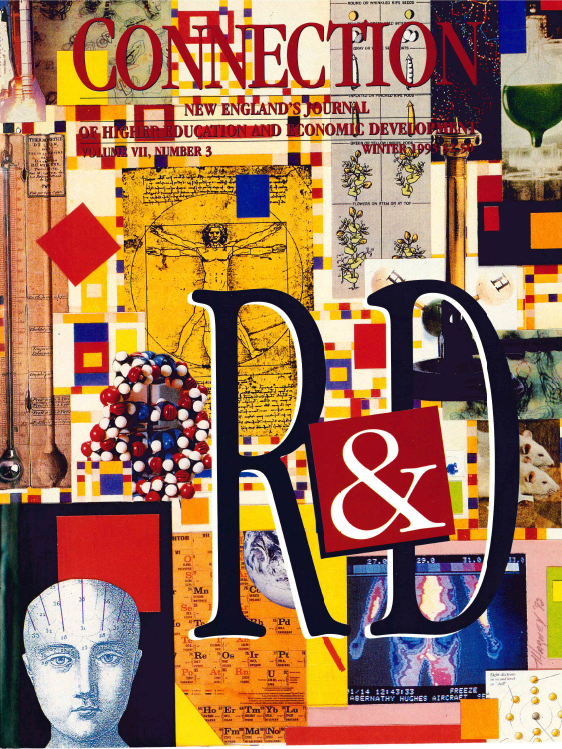
Click the cover image to view and download this issue in PDF format.
Winter 1993
For more information, contact:
John O. Harney, Executive Editor, The New England Journal of Higher Education
617.533.9501
jharney [at] nebhe [dot] org
BOSTON — New England universities are losing ground in the battle for research dollars, with their share of total R&D funds nationwide falling 14 percent between 1984 and 1991, according to a recent New England Board of Higher Education study.
New England’s share of the total R&D expenditures at U.S. universities.shrunk from 10.1 percent in 1984 to 8.7 percent in 1991, and is expected to be even lower today, NEBHE reported in the most recent issue of CONNECTION: NEW ENGLAND’S JOURNAL OF HIGHER EDUCATION AND ECONOMIC DEVELOPMENT, released this week.
That decline cost the region $1 billion in economic activity between 1990 and 1993, according to NEBHE estimates. Those funds, notes NEBHE President John C. Hoy, could not only provide for hundreds of graduate fellowships and research professorships but could create and sustain regional advanced science and technology transfer centers that might now be fueling New England’s economic recovery by focusing on fields such as advanced manufacturing, envirotech, telecommunications, bioprocess engineering and advanced software applications.
The R&D slide, notes Hoy, began at “the height of the region’s 1980s economic miracle and the height of its overconfidence.”
The piece of the total R&D expenditure pie got even smaller between 1984 and 1991 in certain fields: the physical sciences, for instance, lost 25 percent, math and computer sciences fell 21 percent, and engineering lost 19 percent relative to other regions of the country, according to the NEBHE data.
These findings come at a time of increased competition for dwindling federal dollars from universities based in states once thought of as scientific have-nots.. The South Atlantic states in particular have stepped up efforts to attract federal grants. while New England state governments’ committment to university research funding remains comparably paltry. Between 1984 and 1991 R&D expenditures grew by 77 percent in New England, but jumped by 132 percent in the South Atlantic., and the latter region’s share of all R&D spending increased over the same period from 15.5 percent to 18.5 percent. Several South Atlantic universities including the University of South Florida, Emory Univeristy and the University of Maryland at Baltimore tripled their R&D expenditures between 1984 and 1991.
Although traditional New England research leaders have cause for concern (MIT and private , which accounts for $1 of every $5 spent on university research in New England slipped in the 1991 federal ranking from second place to fifth), there are some success stories. Dartmouth College and the University of Massachusetts at Lowell more than doubled their R&D expenditures between from 1984 to 1991.
To reverse the negative R&D trend in New England, NEBHE warned, institutions here must break the dangerous habit of relying so heavily on the federal government for research assistance–federal agencies still provide 68 cents of ever research dollar spend by New England universities, compared to 58 cents nationally. In addition, the University of Massachusetts system and the University of Vermont both increased their R&D spending above the national rate of 104 percent over that same period.
The full NEBHE analyses of the region’s R&D standing is featured in CONNECTION, along with analyses by experts in the field, such as Bruce L.R. Smith of the Brookings Institution; John T. Preston, director of the Technology Licensing Office at MIT; and Michael K. Hooker, president of the University of Massachusetts.
[ssba]
